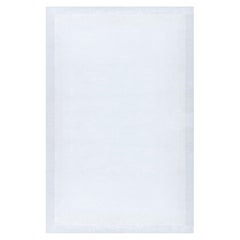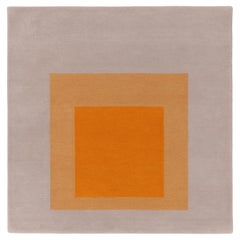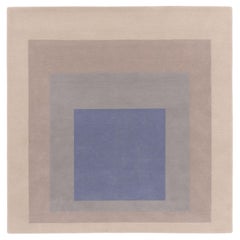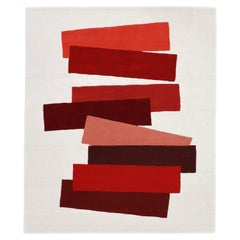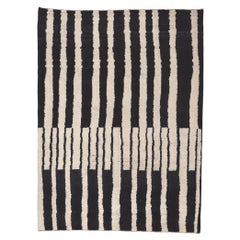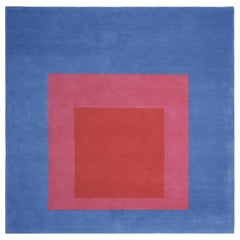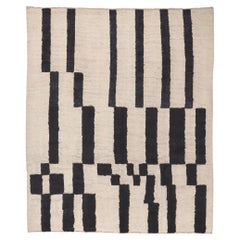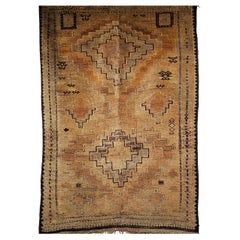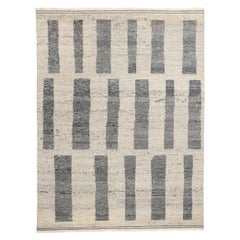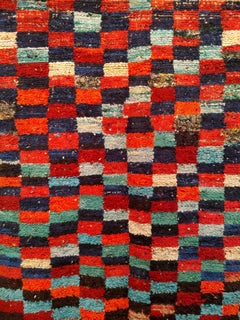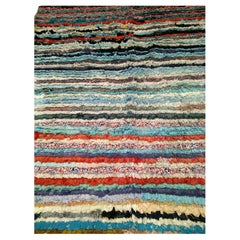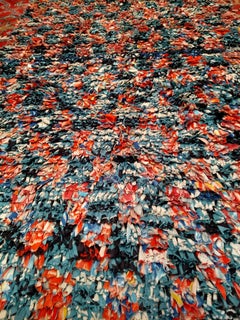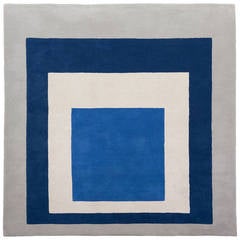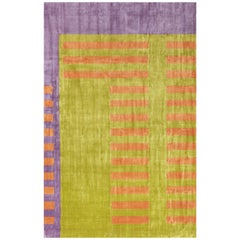Josef Albers Rug
21st Century and Contemporary Tibetan Modern North and South American Rugs
Silk
2010s European Western European Rugs
Wool
2010s European Western European Rugs
Wool
2010s European Bauhaus Western European Rugs
Wool
21st Century and Contemporary Pakistani Bauhaus Moroccan and North Afric...
Wool
2010s Indian Western European Rugs
Wool
21st Century and Contemporary Pakistani Bauhaus Moroccan and North Afric...
Wool
Mid-20th Century Moroccan North and South American Rugs
Wool
21st Century and Contemporary Pakistani Bauhaus Moroccan and North Afric...
Wool
Late 20th Century Moroccan Moroccan and North African Rugs
Wool, Cotton
Late 20th Century Moroccan Moroccan and North African Rugs
Wool, Cotton
Late 20th Century Moroccan Moroccan and North African Rugs
Wool, Cotton
21st Century and Contemporary Pakistani Modern Moroccan and North Africa...
Wool
21st Century and Contemporary Pakistani Modern Moroccan and North Africa...
Wool
21st Century and Contemporary Pakistani Aesthetic Movement Moroccan and ...
Wool
21st Century and Contemporary Pakistani Modern Moroccan and North Africa...
Wool
21st Century and Contemporary Pakistani Bohemian Moroccan and North Afri...
Wool
21st Century and Contemporary Pakistani Aesthetic Movement Moroccan and ...
Wool
21st Century and Contemporary Pakistani Bauhaus Moroccan and North Afric...
Wool
Vintage 1950s Tapestries
Wool, Cotton
21st Century and Contemporary Indian Modern Indian Rugs
Wool
21st Century and Contemporary Indian Modern Indian Rugs
Wool
Vintage 1960s Moroccan Tapestries
Wool, Cotton
21st Century and Contemporary Moroccan Mid-Century Modern Moroccan and N...
Wool
Recent Sales
Vintage 1950s British Modern Western European Rugs
Wool
21st Century and Contemporary Indian Modern Indian Rugs
Silk
2010s Indian More Carpets
Wool
21st Century and Contemporary Pakistani Bauhaus Moroccan and North Afric...
Wool
2010s Indian Western European Rugs
Wool
2010s Indian Western European Rugs
Wool
2010s Indian Western European Rugs
Wool
2010s Indian Western European Rugs
Wool
People Also Browsed
2010s Persian Mid-Century Modern Persian Rugs
Wool
Vintage 1950s Italian Mid-Century Modern Chandeliers and Pendants
Metal
Vintage 1920s Dutch Art Deco Side Tables
Macassar, Oak, Walnut
Vintage 1960s French Mid-Century Modern Planters and Jardinieres
Concrete
2010s Spanish Post-Modern Wall Lights and Sconces
Marble
21st Century and Contemporary Dutch Brutalist Console Tables
Walnut
21st Century and Contemporary Sofas
Linen
21st Century and Contemporary Mexican Mid-Century Modern Floor Lamps
Textile, Wood, Linen, Fiberglass
20th Century Modern Ottomans and Poufs
Metal, Iron
Vintage 1960s Italian Mid-Century Modern Wall Lights and Sconces
Brass, Metal
Vintage 1950s Italian Mid-Century Modern Wall Mirrors
Brass
21st Century and Contemporary Pillows and Throws
Velvet
Vintage 1950s Italian Mid-Century Modern Chandeliers and Pendants
Metal, Brass
2010s Contemporary Landscape Paintings
Oil, Canvas
21st Century and Contemporary Italian Mid-Century Modern Chandeliers and...
Brass
Vintage 1950s Italian Mid-Century Modern Desks and Writing Tables
Metal, Brass
Josef Albers Rug For Sale on 1stDibs
How Much is a Josef Albers Rug?
Finding the Right Rugs And Carpets for You
Good antique rugs and vintage rugs have made their way into homes across the globe, becoming fixtures used for comfort, prayer and self-expression, so choosing the right area rug is officially a universal endeavor.
In modern usage, “carpet” typically denotes a wall-to-wall floor cushioning that is fixed to the floor. Rugs, on the other hand, are designed to cover a specific area and can easily be moved to new locations. However, the terms are interchangeable in many parts of the world, and, in the end, it won’t matter what you decide to call it.
It’s well known that a timeless Persian rug or vintage Turkish rug can warm any interior, but there are lots of other styles of antique rugs to choose from when you're endeavoring to introduce fresh colors and textures to a bedroom or living room.
Moroccan Berber rugs are not all about pattern. In fact, some of the most striking examples are nearly monochrome. But what these rugs lack in complexity, they make up for in brilliant color and subtle variation. Moroccan-style interiors can be mesmerizing — a sitting room of this type might feature a Moroccan rug, carved wooden screens and a tapestry hung behind the sofa.
Handwoven kilim rugs, known for their wealth of rich colors and unique weaving tradition, are pileless: Whereas the Beni Ourain rugs of Morocco can be described as dense with a thick surface or pile, an authentic kilim rug is thin and flat. (The term “kilim” is Turkish in origin, but this type of textile artistry is practiced all across the Balkans, throughout the Arab world and elsewhere.)
When it comes to eye-catching floor coverings, the distinctive “medallion” pattern of Oushak rugs has two types of rounded shapes alternating against a rich red or blue background created with natural dyes, while the elaborate “star” pattern involves large eight-pointed shapes in diagonal rows alternating with diamonds.
If you’re looking for something unexpected, find a runner rug that pops in your hallway or on your stairs. Dig for dazzling geometric patterns in our inventory of mid-century modern rugs and carpets, which includes works designed by the likes of Swedish textile masters Märta Måås-Fjetterström, Marianne Richter and other artisans.
Carpets and rugs have been around for thousands of years. Prehistoric humans turned to animal skin, wool and fur to craft simple fabrics to soften hard terrain. A 2016 study suggests that "cave lions" were hunted for exactly this purpose, and that decorating your cave with their pelts may have conferred strength and prestige. Although many of these early textiles are still in existence, tracing their precise origins is difficult. Carpets quickly became such a valuable trade commodity that the weavings could easily travel far from their places of origin.
The oldest known carpet was found in southern Siberia. (It may have traveled there from Persepolis in Iran.) For the flat-weave floor rugs crafted by Native Americans, cotton was the primary material before sheep’s wool was introduced in the 16th century. In Europe, carpet-making was fundamental to folk art, and Asian carpets imported to European countries were at one time considered a precious luxury and not intended to remain permanently on the floor.
With the variety of area rugs and carpets rolled out for you on 1stDibs — a collection that includes traditional, modern, minimalist rugs and other coverings of all kinds — things will be looking up whenever you’re looking down.
- Who is Josef Albers?1 Answer1stDibs ExpertMarch 22, 2022Josef Albers is an artist associated with the Bauhaus movement who lived from 1888 to 1976. He developed an important color theory hypothesis and employed it in works like his "Homage to the Square" series. On 1stDibs, find a selection of Josef Albers art.
- How do I pronounce Josef Albers?1 Answer1stDibs ExpertMarch 22, 2022To pronounce Josef Albers, say "JOW-suf ALL-burz." His first name is the German spelling of the English name Joseph and said in much the same way. His last name is also of German origin. On 1stDibs, find a range of Josef Albers art.
- What inspired Josef Albers?1 Answer1stDibs ExpertMarch 22, 2022What inspired Josef Albers changed over the course of his life. During the Bauhaus period, his colleagues Johannes Itten and László Moholy-Nagy greatly influenced his work. In the 1950s, Albers and his wife, textile artist Anni Albers, frequently traveled to Mexico to draw inspiration from the local architecture and art. On 1stDibs, shop a range of Josef Albers art.
- When was Josef Albers born?1 Answer1stDibs ExpertMarch 22, 2022Josef Albers was born on March 19, 1888, in Bottrop, Germany. He would go on to become a leader of the modern art movement and to make huge strides in the area of color theory research. Shop a selection of Josef Albers art on 1stDibs.
- What is Josef Albers known for?1 Answer1stDibs ExpertMarch 22, 2022Josef Albers is known for his work as a painter, educator and writer. His work as an artist helped to define the modern period and advance color theory, changing the way future generations approached their own art. His "Homage to the Square" series contains his most famous pieces. On 1stDibs, find a variety of Josef Albers art.
- Where did Josef Albers teach?1 Answer1stDibs ExpertMarch 22, 2022Josef Albers taught at more than one school during the course of his life. After a brief period of time as an elementary school teacher in Bottrop, Germany, he enrolled in the Bauhaus school and began teaching classes there within a few years. After moving to the U.S., he taught at Black Mountain College in North Carolina and the Yale University School of Art in Connecticut. Shop a range of Josef Albers art on 1stDibs.
- Who were Josef Albers’ parents?1 Answer1stDibs ExpertMarch 22, 2022Josef Albers's parents were Magdalena and Lorenz Albers. His father worked as a handyman, painting houses, performing repairs and doing carpentry jobs, and his mother came from a long line of blacksmiths. You'll find a variety of Josef Albers art on 1stDibs.
- How did Josef Albers paint?1 Answer1stDibs ExpertMarch 22, 2022Josef Albers usually painted with a palette knife instead of a paintbrush, liking how the increased level of control allowed him to create sharp, well-defined lines. He rarely used a palette, normally applying paint right from the tube. Usually, he produced his pieces on Masonite board to add texture to the compositions. On 1stDibs, find a collection of Josef Albers art.
- 1stDibs ExpertMarch 22, 2022Josef Albers framed his work in different ways throughout his career, but he is most well known for the compositions of his "Homage to the Square" series. These oil paintings featured bold squares in varying hues that demonstrated how colors impact one another. Albers framed the squares with mathematical precision, masterfully fusing geometry with art. On 1stDibs, find a selection of Josef Albers artistic expression.
- 1stDibs ExpertMarch 22, 2022Over the course of his long career, Josef Albers painted in more than one movement. His early work fits the characteristics of Bauhaus artists, while his later compositions are in line with the features of geometric abstraction. Find a collection of Josef Albers art on 1stDibs.
- 1stDibs ExpertMarch 22, 2022Josef Albers used the same materials throughout his career. Usually, he preferred oil paints, which he applied with a palette knife instead of a brush. Much of his work appears on textured masonite board. Find a selection of Josef Albers art on 1stDibs.
- 1stDibs ExpertMarch 22, 2022Josef Albers taught many subjects at the Bauhaus. When he began as a teacher, he oversaw the Vorkurs, the introductory course that reviewed composition, construction, design, color theory and other fundamentals. In later years, he became a full professor and expanded his course offerings. On 1stDibs, shop a selection of Josef Albers art.
- 1stDibs ExpertMarch 22, 2022Josef Albers's color theory holds that the only way to fully understand a single color is to view it alongside other colors. He believed that surrounding colors had the ability to change the perception of a hue, and he used his "Homage to the Square" series to demonstrate this. Find a variety of Josef Albers art on 1stDibs.
- 1stDibs ExpertMarch 22, 2022Josef Albers came to America in 1933 after the Nazis shuttered the Bauhaus. He and his wife, the textile artist Anni Albers, originally settled in North Carolina. During his time there, Albers taught at Black Mountain College. Shop a variety of Josef Albers art on 1stDibs.
- 1stDibs ExpertMarch 22, 2022No, Josef Albers's art is generally not considered fauve. Fauvism refers to an art movement that lasted from 1904 to around 1910 and included artists like Henri Matisse and André Derain. Although these artists' use of color likely influenced Josef Albers, historians associate him with the Bauhaus movement that lasted from 1919 to 1933. On 1stDibs, shop a variety of Josef Albers art.
- 1stDibs ExpertMarch 22, 2022Josef Albers taught at the Yale University School of Art from 1950 until 1958. In addition to instructing classes, he served as the dean of the university's Department of Design. You can find a range of Josef Albers art on 1stDibs.
- 1stDibs ExpertMarch 22, 2022Josef Albers went to more than one school during the course of his life. He attended the Königliche Kunstschule in Berlin and earned a teaching certification after he graduated in 1915. In 1920, he enrolled at the Bauhaus school. Within three years, he began teaching the introductory course at the institution. Shop a collection of Josef Albers art on 1stDibs.
- 1stDibs ExpertMarch 22, 2022Josef Albers taught at an elementary school in the town of Bottrop, Germany, during the early 20th century. The name of the school is unknown. Albers would go on to teach at the Bauhaus and Yale University. On 1stDibs, shop a collection of Josef Albers art.
- 1stDibs ExpertMarch 22, 2022To get Josef Albers paintings appraised, search for certified art appraisers in your area who are knowledgeable about works from the modern period. You may be able to get a rough idea of the value from an online search, but a true determination of what a painting is worth requires a close inspection by a professional. On 1stDibs, find a collection of expertly vetted Josef Albers art.
Read More
Hechizoo’s Original Sin Rug Tempts with Shimmering Copper, Tin and Bronze
Embroidered with snakes, turtles, birds and vines, it celebrates a dazzling natural world before the arrival of Adam and Eve.
Splashy Blooms Bud and Wilt in Artist Santi Moix’s Floral Rug
The colorful design captures the natural splendor of a backyard garden.
In South Africa, Rich Mnisi Is Taking Biomorphic Design to the Next Level
The rising fashion star is having his first solo show of furniture designs, at Southern Guild in Cape Town, and his far-out, snaking forms are like nothing you've ever seen.
The Artists and Designers behind Today’s Coolest Rug Collaborations
Top carpet companies are expanding the arena of artful floor coverings, seeking out creatives from other media and marrying their talents to textiles.
Tantuvi’s New Rugs Were Inspired by the Travertine Quarries of India and the Spanish Steps of Rome
The New York–based rug designers employ earthy colors and time-honored artistry in their creations.
We’re Going Gaga for the New Sasha Bikoff Rugs
The New York interior designer found inspiration in disco culture and astrology for her debut home collection.
Paradise Is Found Underfoot in These Majestic Persian Textiles
Persian garden carpets, with their timeless beauty and unmatched craftsmanship, have an enduring appeal.
12 Mesmerizing Moroccan-Style Interiors
With their rich layers, intricate patterns and elaborate lighting, rooms with a Moroccan influence are easy to spot.
